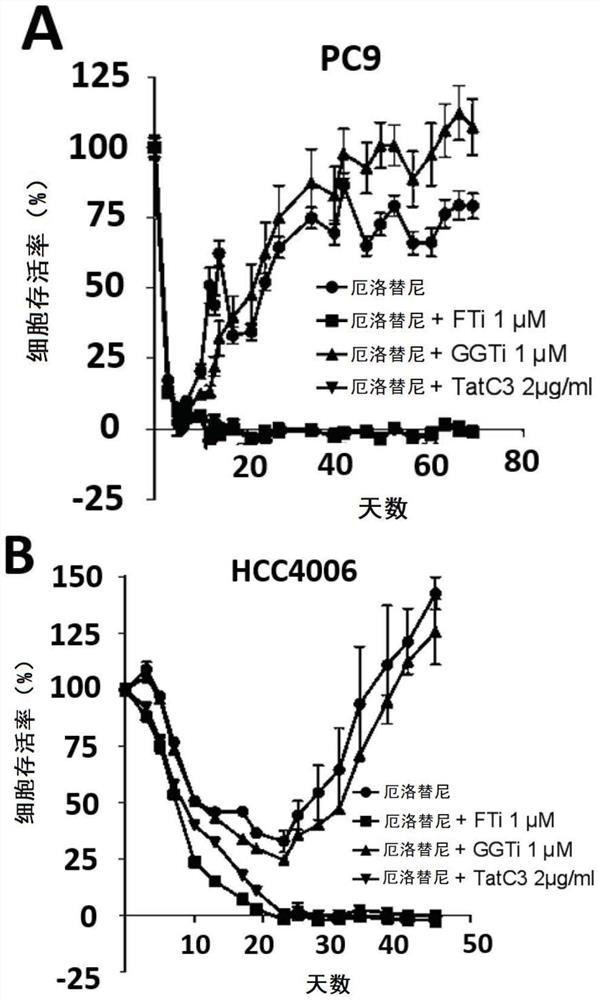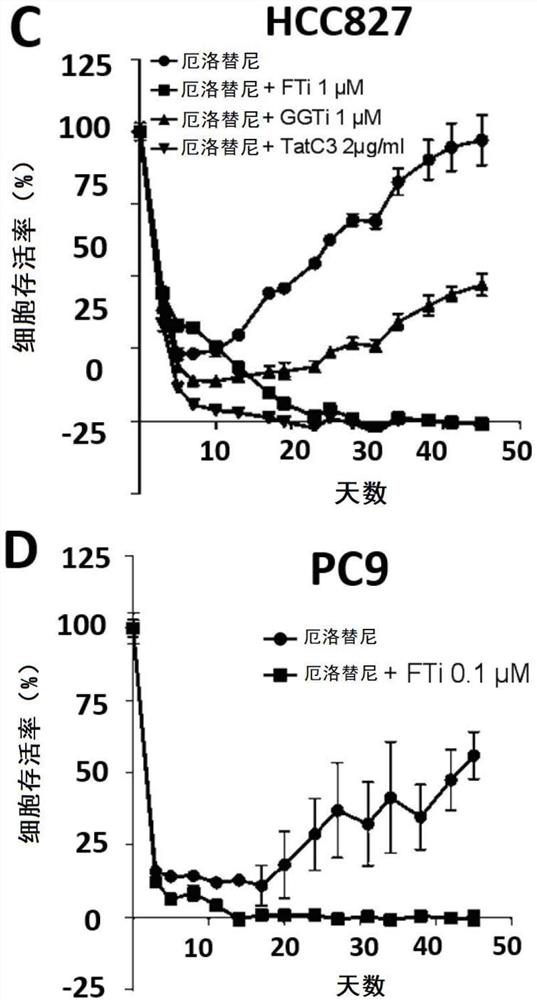Method for treating cancer having resistance to kinase inhibitors
A technology of kinase inhibitors and inhibitors, applied in the medical field, can solve problems such as lack of accurate in vivo phenotypes
- Summary
- Abstract
- Description
- Claims
- Application Information
AI Technical Summary
Problems solved by technology
Method used
Image
Examples
Embodiment Construction
[0075] in vitro:
[0076] We recently reported that the RAS-associated GTPase RHOB has a critical role in preventing cell death via the AKT pathway in EGFR-mutant lung cancer cells treated with EGFR-TKIs 18. We found that high RHOB tumor levels predicted early relapse in NSCLC patients with EGFR-activating mutations who received EGFR-TKI therapy. The same was true in BRAF-mutant melanoma treated with the BRAF inhibitor vemurafenib 19 , suggesting that the RHOB pathway may be a common adaptive mechanism for receptor tyrosine kinase (RTK)-ERK pathway inhibition, possibly inducing the acquisition of a DTC state. We also identified a novel phenotype associated with in vitro drug resistance following EGFR-TKI treatment, which is consistent with known treatment-induced senescence (TIS) 20 The processes share some common characteristics, but also display some specific characteristics (data not shown). We therefore refer to this phenotype as "senescence-like". These observations ...
PUM
 Login to View More
Login to View More Abstract
Description
Claims
Application Information
 Login to View More
Login to View More - R&D
- Intellectual Property
- Life Sciences
- Materials
- Tech Scout
- Unparalleled Data Quality
- Higher Quality Content
- 60% Fewer Hallucinations
Browse by: Latest US Patents, China's latest patents, Technical Efficacy Thesaurus, Application Domain, Technology Topic, Popular Technical Reports.
© 2025 PatSnap. All rights reserved.Legal|Privacy policy|Modern Slavery Act Transparency Statement|Sitemap|About US| Contact US: help@patsnap.com



